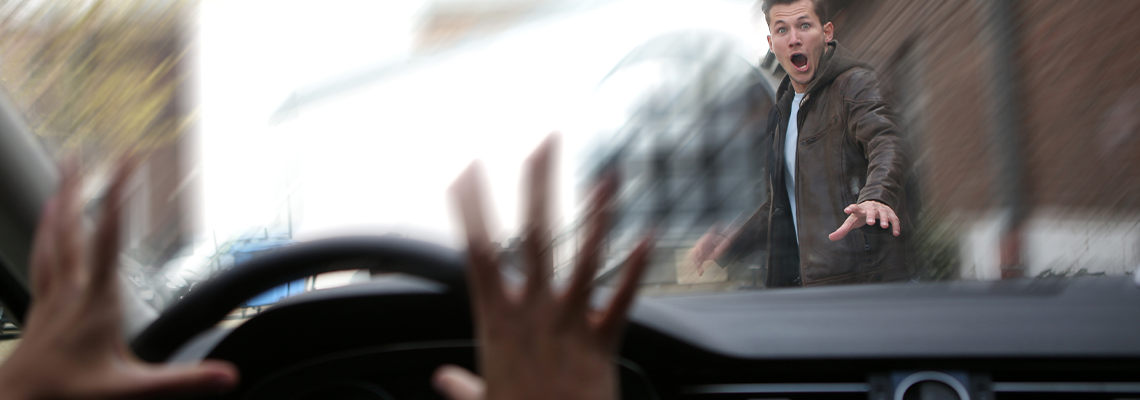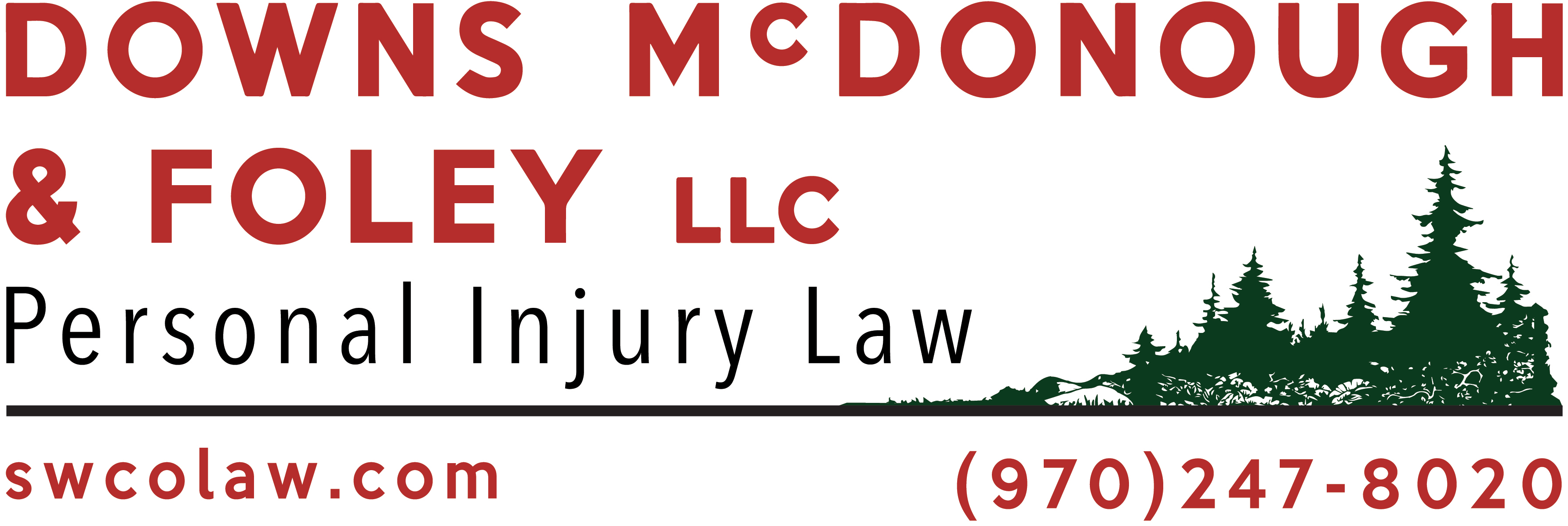
A Pedestrian Accident Claim: How to File One
Pedestrian accidents can lead to serious injuries and significant emotional distress, leaving victims struggling with medical bills, lost wages, and a prolonged recovery. If you’ve been involved in a pedestrian accident, you may be able to seek compensation for your injuries and other damages.
Filing a pedestrian accident claim can help you recover the financial support you need during this difficult time. At Downs McDonough & Foley, LLC in Durango, Colorado, we’ll guide you through the essential steps involved in filing a pedestrian accident claim, from gathering evidence to working through the legal process.
What Constitutes a Pedestrian Accident?
A pedestrian accident often involves a collision between a person on foot and a motor vehicle. These crashes are serious because an individual on foot doesn’t have the protective frame of a car. When an impact occurs, it may lead to life-altering injuries or other consequences that require medical care and might disrupt daily activities.
Some of the most common causes of these injuries include:
Driver negligence: Failing to yield, driving under the influence, or looking at a phone instead of the road.
Poor visibility: Pedestrians may be difficult to see in areas with limited lighting or blocked signage.
Road conditions: Problems like broken sidewalks or missing crosswalks can catch pedestrians off guard.
The severity of injuries varies, but even low-speed collisions can cause significant personal injury. While Colorado laws give pedestrians certain protections, filing a claim still depends on gathering evidence, showing who was responsible, and establishing that harm was directly related to the accident.
How Does a Pedestrian Accident Claim Work?
A claim allows an injured pedestrian to ask for compensation after being hurt by someone else’s wrongful actions. Personal injury law focuses on whether a responsible party acted carelessly or violated a duty, and that violation led to the victim’s injuries. A pedestrian may file a claim if:
Another person or entity was at fault: This can be a driver, a company managing a commercial vehicle, or a municipality responsible for road conditions.
Injuries resulting from the incident: Medical records, photos, and other documents can confirm physical harm.
Damages were sustained: These might include hospital bills, missed income from time off work, and emotional distress.
Once you’re ready to proceed with a pedestrian accident claim, the process typically involves contacting the driver’s insurance provider or, if necessary, filing a lawsuit. Some cases are settled privately, while others may move to court if there’s a dispute about fault or the extent of injuries.
Steps to Take After a Pedestrian Accident
Moving from an accident scene to a claim can feel complicated, but a few steps may improve the chances of a positive outcome. Pedestrian accidents often happen in busy intersections or parking lots, creating chaos and confusion. Staying calm and organized is important, as well as doing the following:
Seek medical care: Always address urgent needs immediately. Even if injuries seem mild, some problems develop gradually.
Report the accident: Call the police so there’s an official report. If possible, confirm the details the officer includes are accurate.
Gather information: Obtain the driver’s license number, insurance details, and contact info. If there are witnesses, write down their names and phone numbers.
Take photos: Capture images of the scene, street signs, road conditions, and injuries.
Notify your insurance: Your policy may provide coverage. This is part of protecting your personal injury claim as well.
Being thorough early on helps strengthen your claim down the road, especially if questions about liability or injuries arise. Proper evidence collection at the crash site often eliminates confusion later.
Medical Evidence and Treatment
Moving from the immediate steps at the crash scene to managing ongoing treatment is a crucial part of your personal injury claim. Thorough medical records form the backbone of a strong case. In many instances, the severity of injuries isn’t fully visible in the initial hours or days, which is why consistent follow-up care is important.
Keep appointment records: Document each visit and save any instructions given by healthcare providers.
Collect receipts: Save every bill, including hospital stays, medication costs, and physical therapy charges.
Track symptoms: Write down pain levels, mobility challenges, and emotional struggles in a daily journal.
Follow doctor’s advice: Failing to do so can cause insurers to question whether injuries are as severe as you claim.
Good medical documentation connects the collision to your physical harm. It shows that you didn’t ignore your injuries, and it provides a clear timeline that ties everything back to the pedestrian accident.
Liability and Insurance Considerations
After you’ve secured preliminary evidence and begun treatment, liability becomes a primary focus. Drivers usually have insurance, though disputes sometimes arise about who carried the blame or if an injured pedestrian contributed to the accident. Colorado follows a modified comparative negligence system, which reduces the compensation if a victim shares fault.
Insurance conversations involve proving exactly how the crash happened and linking the driver’s careless actions to your injuries. The driver’s insurance may claim you crossed the street improperly or walked outside a designated crosswalk. You’d address that by presenting witness statements, traffic camera footage, and photographs from the scene.
Gathering Evidence for a Strong Claim
Moving from liability to documentation is natural because every claim depends on proof. The more you can show, the easier it is to negotiate or proceed in court if a settlement isn’t possible. Pedestrian accident cases often involve the following items:
Photos or videos from the scene: Immediate images capture vehicle positions and skid marks.
Witness statements: Observers can confirm which party was in the wrong.
Police reports: These official documents often note whether a driver was cited for traffic violations.
Medical evaluations: Detailed notes that connect specific injuries to the event.
If the collision happened near a business or in a well-monitored area, you can sometimes secure surveillance camera footage. This footage may reveal whether the driver ran a red light or didn’t look for pedestrians before turning. Tying together visual, medical, and testimonial evidence can show that you suffered a personal injury due to someone else’s carelessness.
Filing a Pedestrian Accident Claim
A personal injury claim begins by alerting the driver’s insurance about the collision. Once the insurance company is aware, they might contact you for more details. Some people choose to let their legal representative communicate to avoid accidental admissions of partial fault. The process usually involves:
Initial notice: Inform the at-fault driver’s insurer about the accident and your injuries.
Demand letter: Provide medical records, bills, and other documentation to show the damages requested.
Negotiations: Discuss a potential settlement with the insurer.
Court filing: File a lawsuit if negotiations aren’t productive or if the insurer denies wrongdoing.
Moving from the discovery of evidence to a formal claim often reveals how prepared each side is. If the driver’s insurance sees you’ve gathered solid proof, they may propose a reasonable settlement. If not, they could try to blame you or question the seriousness of your injuries.
Factors That Affect Compensation
Shifting from filing procedures to compensation details reminds accident victims that personal injury claims can address various forms of harm. The goal is to seek damages that reflect the true cost of what happened.
While no formula fits every case, a few key categories often appear in pedestrian accident claims:
Medical expenses: Ambulance rides, surgeries, medications, physical therapy, and future treatments.
Lost income: Wages missed during recovery or reduced earning capacity if an injury leaves you unable to perform certain tasks.
Pain and suffering: Emotional distress, mental anguish, and overall impacts on everyday life.
Property damage: Although less common with pedestrian accidents, items like phones or personal belongings might need replacement.
When transitioning between discussions of evidence and compensation, keep in mind that each piece of evidence supports the overall request for damages. If a settlement doesn’t cover everything—especially potential long-term effects—a lawsuit might be the next step.
Contact a Personal Injury Attorney Today
When you've been injured, don't hesitate to reach out to an experienced personal injury attorney. Downs McDonough & Foley, LLC assists clients in Durango, Colorado, including Telluride, Pagosa Springs, and Cortex. Contact us to learn how our approach might help you start moving forward with your personal injury claim.

